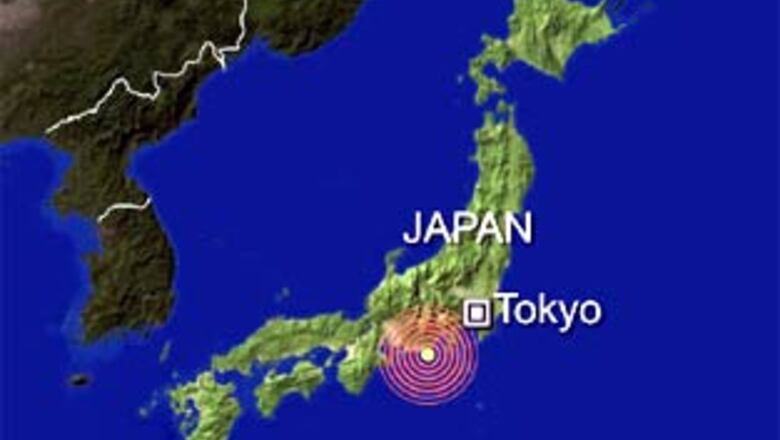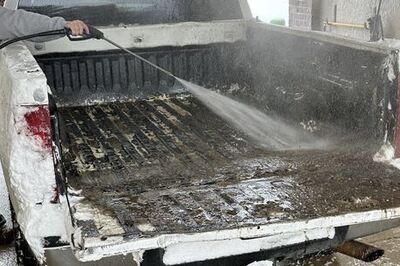
views
Tokyo:A strong earthquake with a preliminary magnitude of 6.6 jolted eastern and central Japan early on Tuesday, throwing food and bottles from shop shelves and rattling houses across Tokyo.
The area has been hit by heavy rain since Monday and the weather agency warned of possible landslides and flooding, as train services were suspended and highways were closed for checks.
The focus of the 5:07 a.m. (2007 GMT, Monday) tremor was 20 km (12 miles) below the surface of Suruga Bay, the Japan Meteorological Agency said, in Shizuoka prefecture, around 150 km (90 miles) southwest of Tokyo.
A tsunami of up to 60 cm (24 inches) was recorded along the Pacific coast.
"It was a sideways shaking like I've never experienced before. Things fell from the shelves," Atsushi Imai, a local city employee, told national broadcaster NHK.
The government's Nuclear and Industrial Safety Agency said Chubu Electric Power Co Inc had halted all operations at its Hamaoka nuclear plant for safety checks.
TV pictures showed glass bottles shattered on a convenience store floor, a TV newsroom with video tapes thrown from shelves, and a temple where tiles had been shaken off the roof and were scattered on the ground.
"There was a bit of shaking at first, then it got stronger and I couldn't stand up. Elevators and other machines like the heater for baths have stopped running," said a hotel worker in Omaezaki contacted by phone.
"Some files fell off shelves and lamps toppled over. Our guests are fine, but their families have called since the earthquake to ask about their safety," she said.
A fire official said a small child was taken to hospital after a TV fell off a shelf and hurt its leg. Trains in the area were halted for safety checks and some highways were closed for damage inspections.
"I was still half asleep so it was intense. It took a while for me to come back to reality," said Yoshiyuki Ikeda, an official at Yaizu city in Shizuoka prefecture. Earthquakes are common in Japan, one of the world's most seismically active areas.
The country accounts for about 20 percent of the world's earthquakes of magnitude 6 or greater. In October 2004, an earthquake with a magnitude of 6.8 struck the Niigata region in northern Japan, killing 65 people and injuring more than 3,000.
That was the deadliest quake since a magnitude 7.3 tremor hit the city of Kobe in 1995, killing more than 6,400.















Comments
0 comment